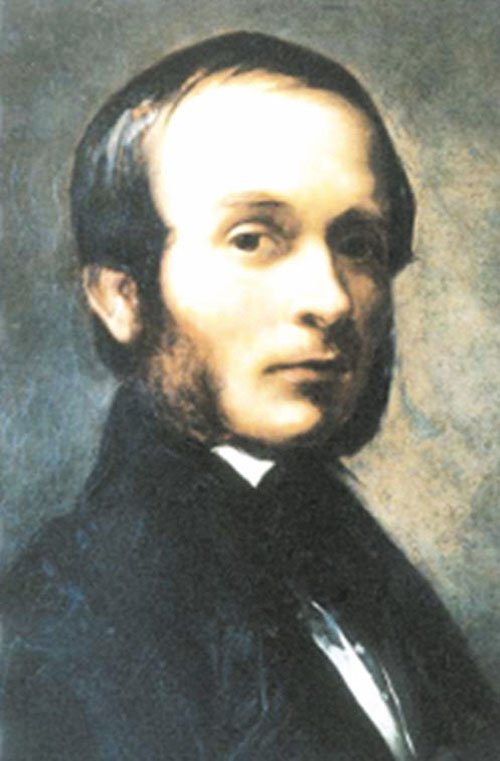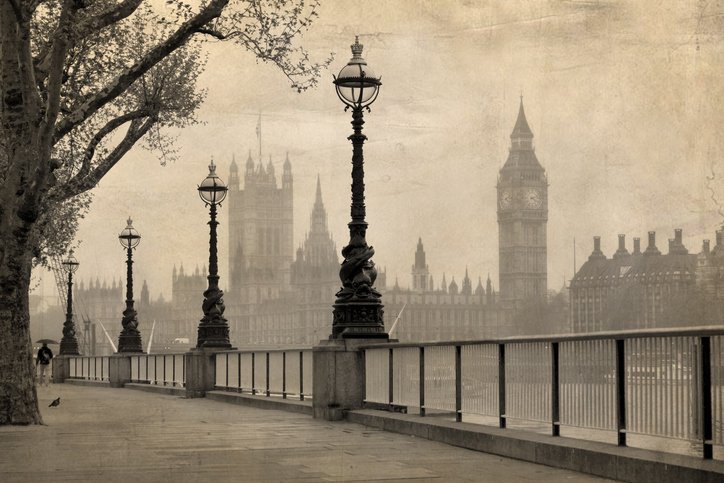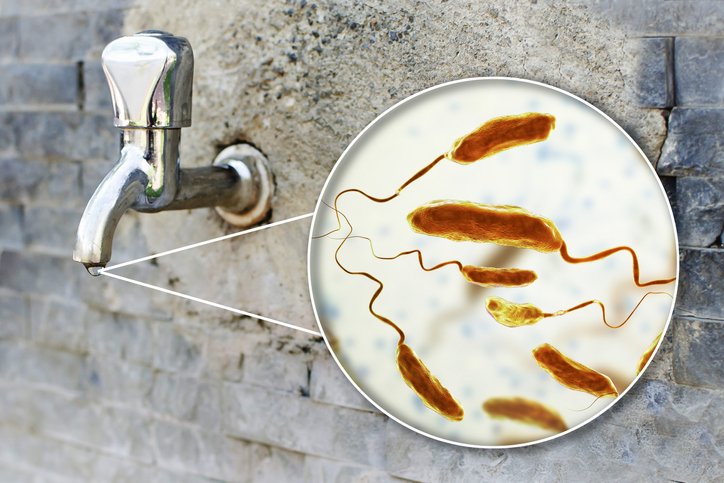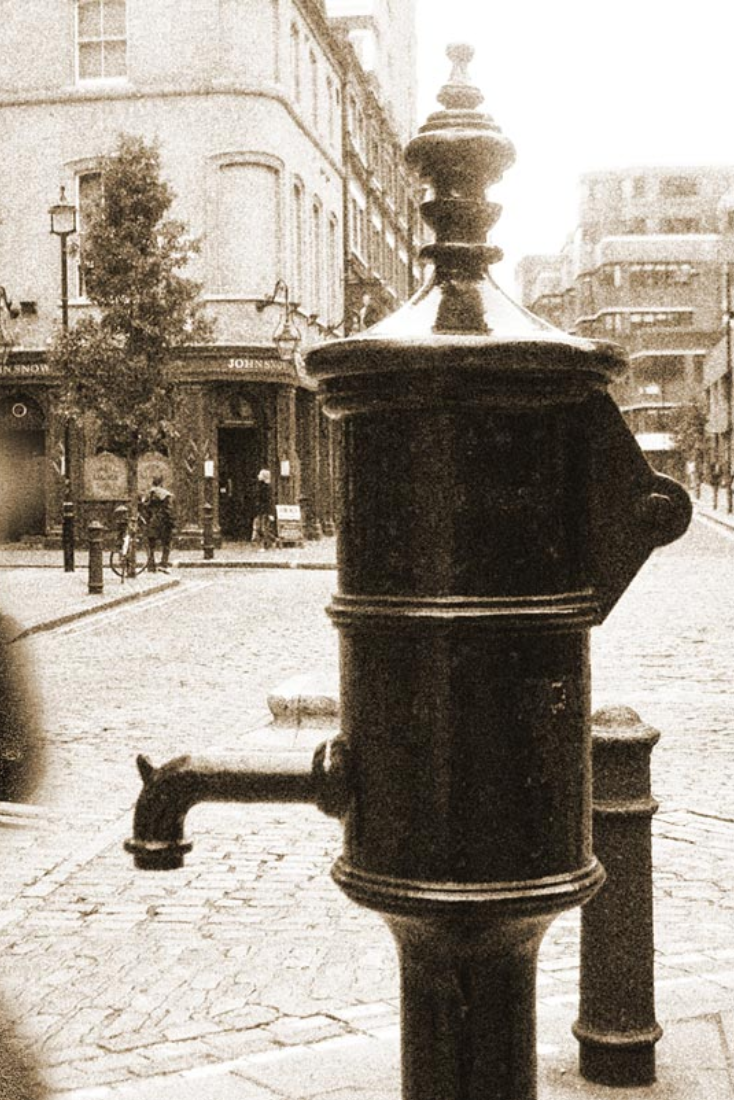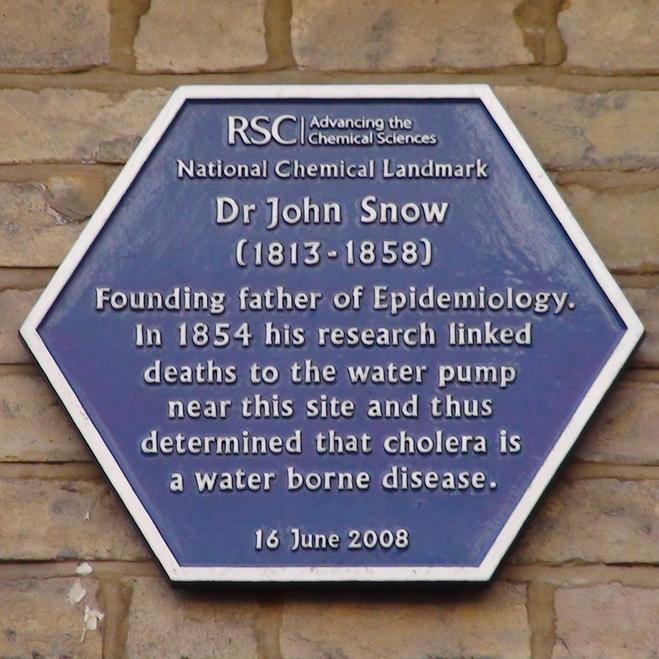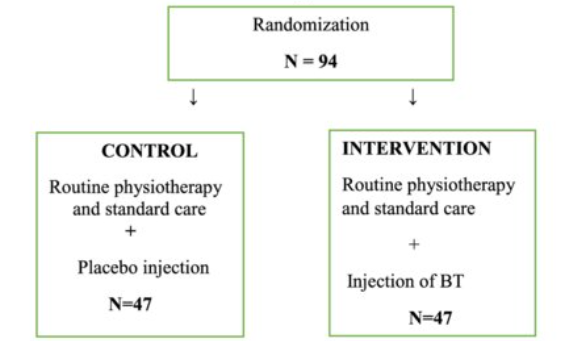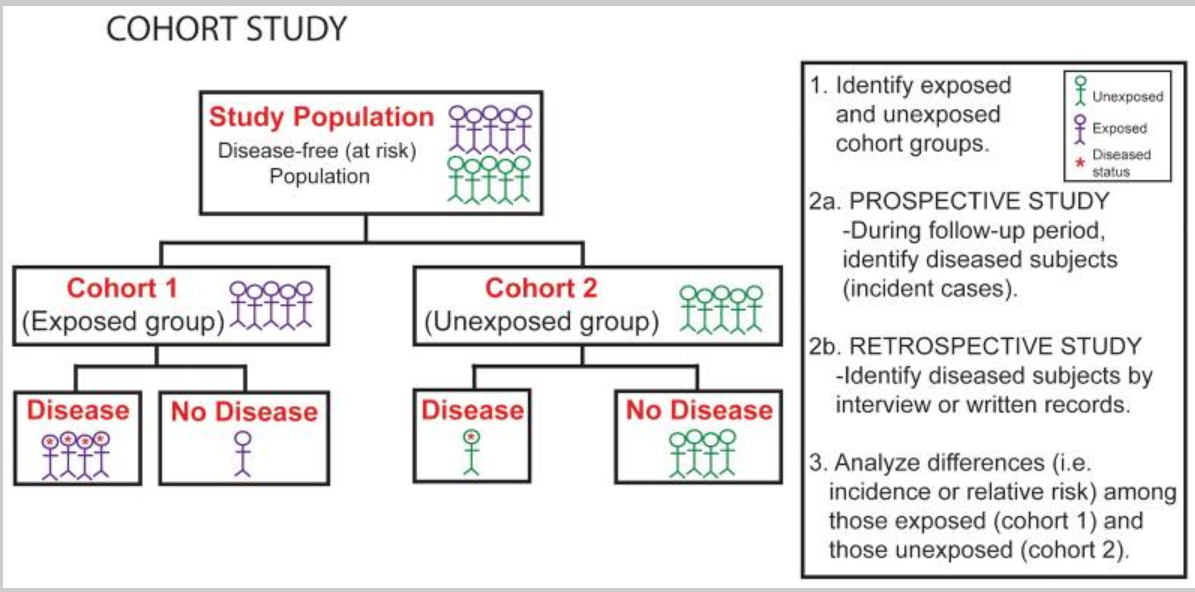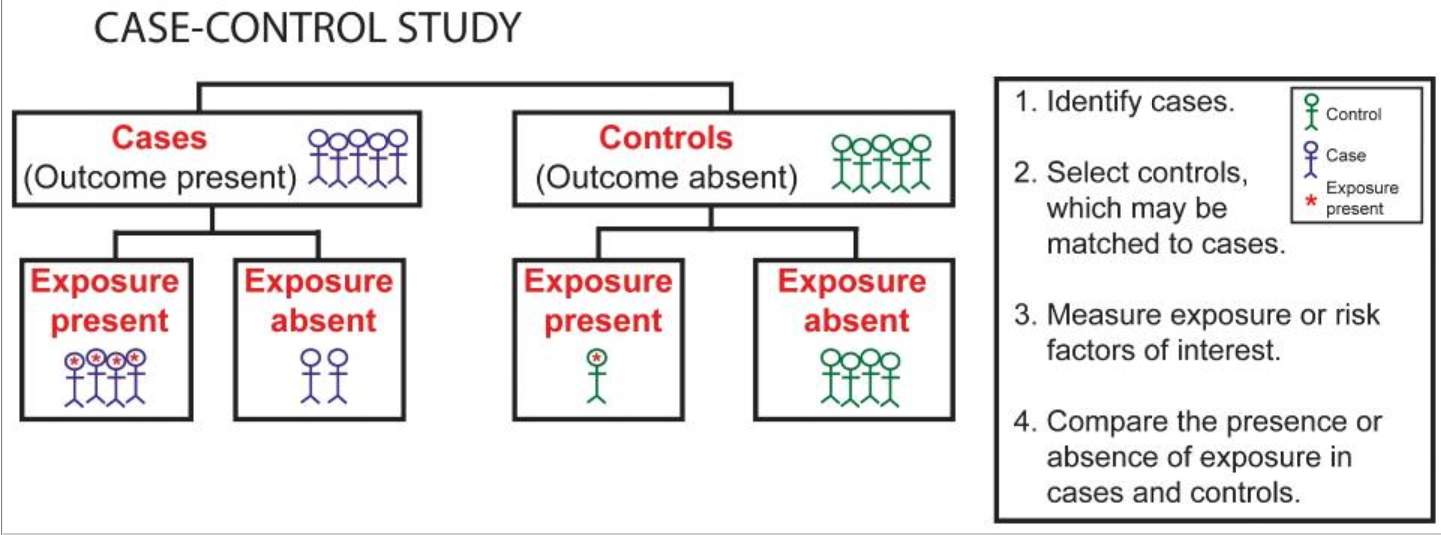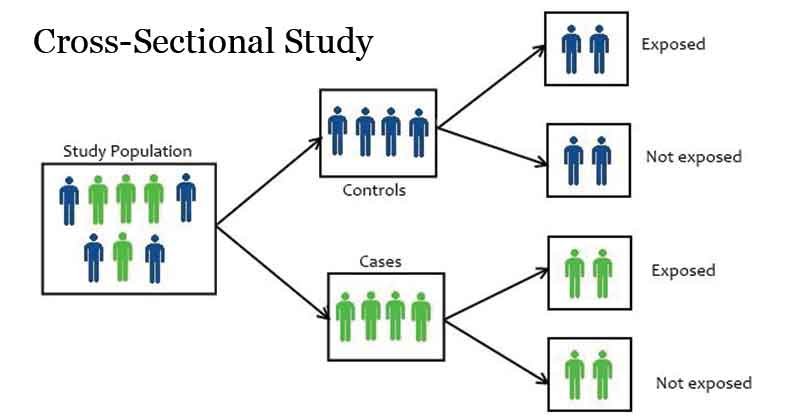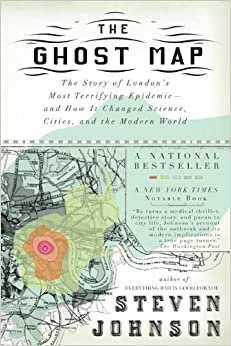The Story of John Snow and How He Saved Countless Lives
Randomized controlled trials (RCTs) have long been considered the gold standard for determining the effectiveness of a drug, surgery, or other medical intervention. But observational studies, although long regarded as second-rate compared to RCTs, have contributed invaluable information to the medical sciences. Indeed, analyses of RCTs compared to observational studies have concluded that well-run observational studies are comparable. I will explain RCTs and observational studies later in this post, but first, I want to tell the story of John Snow and how he used his powers of observation to lower worldwide death rates, perhaps more than anyone in history.
John Snow and Cholera
https://www.rcseng.ac.uk/library-and-publications/library/blog/mapping-disease-john-snow-and-cholera/
The John Snow I am talking about is not the one from Game Of Thrones. The real John Snow was a physician and scientist who observed a few cholera epidemics in London in 1854. By mapping where the victims lived, he demonstrated that contaminated water dispensed from the Broad Street pump was the key source of the disease. His work, the first of its kind, resulted in the advent of sewage drainage systems and water purification systems in cities and towns in later decades, drastically reducing the threats of cholera, typhoid, and many other waterborne diseases.
The Miasma Theory of Disease
Throughout history, cities have become increasingly crowded. Unfortunately, with crowding comes poor sanitary conditions, especially contaminated drinking water and raw sewage. Throughout history, these conditions have been the genesis of major epidemics.
However, before we knew about germs, the prevailing theory was that disease came from bad smells called miasmas. In other words, it was airborne, like Covid-19. In London, the tenements would collect the waste in specialized cellar chambers called cesspits. The human waste, called night soil, would be collected and used for fertilizer on the nearby farms. Because of the stench, sewers were installed that dumped the waste directly into the Thames River. This only succeeded in transferring the stench to the river, and it got the name the great stink. The problem was that the water pumps got their water from the Thames. So, when the Cholera germ, which is spread via feces in the water, was dumped in the Thames, it was subsequently imbibed via the local street pumps in London. These conditions resulted in repeated outbreaks of waterborne diseases, including cholera, dysentery, tuberculosis, typhoid fever, influenza, yellow fever, malaria, and other infectious diseases, as well as the loss of the fishing industry.
The Vicious Cholera Bacteria
Cholera originated in India. Ships with contaminated bilge water subsequently spread it worldwide. Despite modern sewage and potable drinking water, it continues to be a problem to this day. The germ causes intense diarrhea. If the victim does not adequately rehydrate, death results. Unfortunately, back in the day, rehydration was not yet in wide use. As a result, local outbreaks resulted in numerous deaths quite rapidly. The first outbreak John Snow, now a physician of note, investigated was in London in 1854. 600 people in one part of Soho died within ten days.
The Germ Theory Versus Miasma
Snow was in the minority. He believed in the waterborne germ theory. So, he used a map to determine where the victims were getting their drinking water. He quickly realized that the Broad Street Pump, now Broadwick Street, was the probable source. Supporting evidence came from a local brewery and poorhouse that had self-contained wells. Those who drank from them were spared from the illness, helping to disprove the miasma theory since the healthy individuals were exposed to the same bad smells as those who became ill.
Unfortunately, the V. cholera organism was only reported in the local Italian medical literature in 1854, so Snow did not have this valuable supporting information. Erroneously, international recognition was given to Robert Koch years later, in 1883. Koch had already discovered tuberculosis and anthrax germs. The credit now goes to Filipo Pucini, but only since 1984.
Politicians Making Medical Decisions
https://londonexposed.co.uk/5-john-snows-water-pump/
The local authorities permitted Snow to remove the pump handle, resulting in the outbreak disappearing in a few days. Sadly, Snow died of a stroke in 1858, so he never saw the fruits of his labor. His views, however, were rejected by the medical establishment of the time. The scientists of the time convinced the politicians that Snow was incorrect, leading them to inactivity. They cried, "You know nothing John Snow." (my homage to Game of Thrones)
https://tvgag.com/gag/you-know-nothing-jon-snow-2/
Snow's waterborne germ theory of disease was not widely accepted until 1866, when William Farr, initially one of Snow's chief opponents, realized the theory's validity when investigating a new cholera outbreak. Snow’s findings were finally recognized, leading to the sanitation and water supply changes that finally ended cholera epidemics. The first use of chlorine as a disinfectant for water facilities was in 1897, 39 years after John Snow's untimely and unfortunate death. Sadly, potentially millions of people who could have been spared in those intervening years died of waterborne illnesses had the politicians believed John Snow.
John Snow's Legacy
https://www.londonremembers.com/memorials/dr-john-snow-rsc-plaque
Snow is now recognized as the father of modern epidemiology. His work which led to modern water purification and sanitary practices has caused the virtual disappearance of waterborne illnesses in industrialized countries. Millions of lives are continually spared from these diseases as a result. Unfortunately, developing countries still suffer outbreaks due to inadequate sanitation and clean water. Also, disaster zones result in waterborne illness when sanitation and water facilities are incapacitated.
Randomized Control Trials
https://www.researchgate.net/publication/333027177_Efficacy_of_botulinum_toxin_in_modifying_spasticity_to_improve_walking_and_quality_of_life_in_post-stroke_lower_limb_spasticity_-_A_randomized_double-blind_placebo_controlled_study/figures?lo=1
RCTs use a strict set of criteria. Typically, two identical groups are used: one group is the control, and one is the experimental group. The experimental group is usually subjected to one particular intervention at a time to control for all variations, save one. For instance, they may be given one medication or perhaps a specific exercise regimen. The control group is not allowed to have the intervention but is given a placebo or sham exercise regimen, so they do not know which group they are in. The researchers are also unaware of which group the subjects are in, nor are the subjects, making the study double-blind.
The randomization comes from the fact that, in the case of a pill, the researcher is not allowed to know whether it is a placebo or a real medication. Instead, there is a master list with serial numbers identifying placebo from drugs. The groups can be sorted out when the trial is over to see the results. This way, the researchers, who may have a bias, are incapable of succumbing to it.
Lastly, control means controlling all variables, especially the studied intervention. This way, any differences between the groups can be attributed to the intervention, which, ideally, is the only difference between the groups.
RCTs and Ethics
Unfortunately, many RCTs are unethical. For example, John Snow, had he intentionally given cholera-tainted water to subjects to see the outcome, would have been causing harm and death and breached the Hippocratic oath. Additionally, any standard of care cannot be withheld from subjects. For instance, since cardiac stents are the standard, no researcher today can deny the procedure to a group to see if the outcome differs from those who receive it. Before it was accepted as the standard of care, experiments used controls who did not receive stents.
Observational studies
In observational studies, the investigator does not intervene and rather simply "observes" and assesses the strength of the relationship between an exposure and disease variable, as did John Snow. The three types of observational studies include cohort, case-control, and cross-sectional studies.
Cohort Studies
https://www.ncbi.nlm.nih.gov/pmc/articles/PMC2998589/
Cohort studies typically use exposures, as did John Snow. The groups, known as cohorts from the Roman Legion military units, are grouped by exposure. In Snow's case, he determined whether they were exposed to tainted water. Additionally, the studies can be prospective or retrospective, meaning they can track forward in time (prospective) or back (retrospective). Snow’s study was retrospective; he identified patients with Cholera and found out if they had a past recent exposure. Since prospective studies can take decades, retrospective studies are potentially more attractive. The problem is that there is almost no control because the past is unalterable. Hence, prospective studies are much more specific.
Case-Control Studies
https://www.ncbi.nlm.nih.gov/pmc/articles/PMC2998589/
Case-control studies identify the outcome first. The outcome could be many things, such as a particular surgery, a complication, or an illness. Then, the groups are separated based on the outcome. The group without the outcome is the control group. This way, the two groups can be immediately compared. Next, their past histories are examined to find patterns. For instance, comparing people with and without lung cancer led to the conclusion that cigarettes cause lung cancer.
Cross-sectional Studies
https://thebiologynotes.com/cross-sectional-study/
Cross-sectional research can describe characteristics that exist in a community but not determine cause-and-effect relationships between different variables. However, this method is often used to make inferences about possible relationships or to gather preliminary data to support further research and experimentation. These studies always occur at one moment in time: the present. The researchers record their observations but do not manipulate any variables. The data can be compared to study things like developmental benchmarks. An example would be normal height charts for growing children.
Observational Studies Vindicated
One large analysis of numerous RCTs and observational studies done since 1984 found no difference in the quality of their outcomes. 1 Another analysis done in 2000 of five clinical topics and 99 reports found that the average results of the observational studies were remarkably similar to those of the randomized, controlled trials. 2
Finally, the spectacular life-saving results of John Snow's observational results may never be duplicated again. If you are interested in discovering more about John Snow, I highly recommend the book The Ghost Map by Steven Johnson.
Citations:
Johnson, S. (2007). The ghost map. Riverhead Books.
Song JW, Chung KC. Observational studies: cohort and case-control studies. Plast Reconstr Surg. 2010 Dec;126(6):2234-2242. doi: 10.1097/PRS.0b013e3181f44abc. PMID: 20697313; PMCID: PMC2998589.
Tulchinsky TH. John Snow, Cholera, the Broad Street Pump; Waterborne Diseases Then and Now. Case Studies in Public Health. 2018:77–99. doi: 10.1016/B978-0-12-804571-8.00017-2. Epub 2018 Mar 30. PMCID: PMC7150208.
